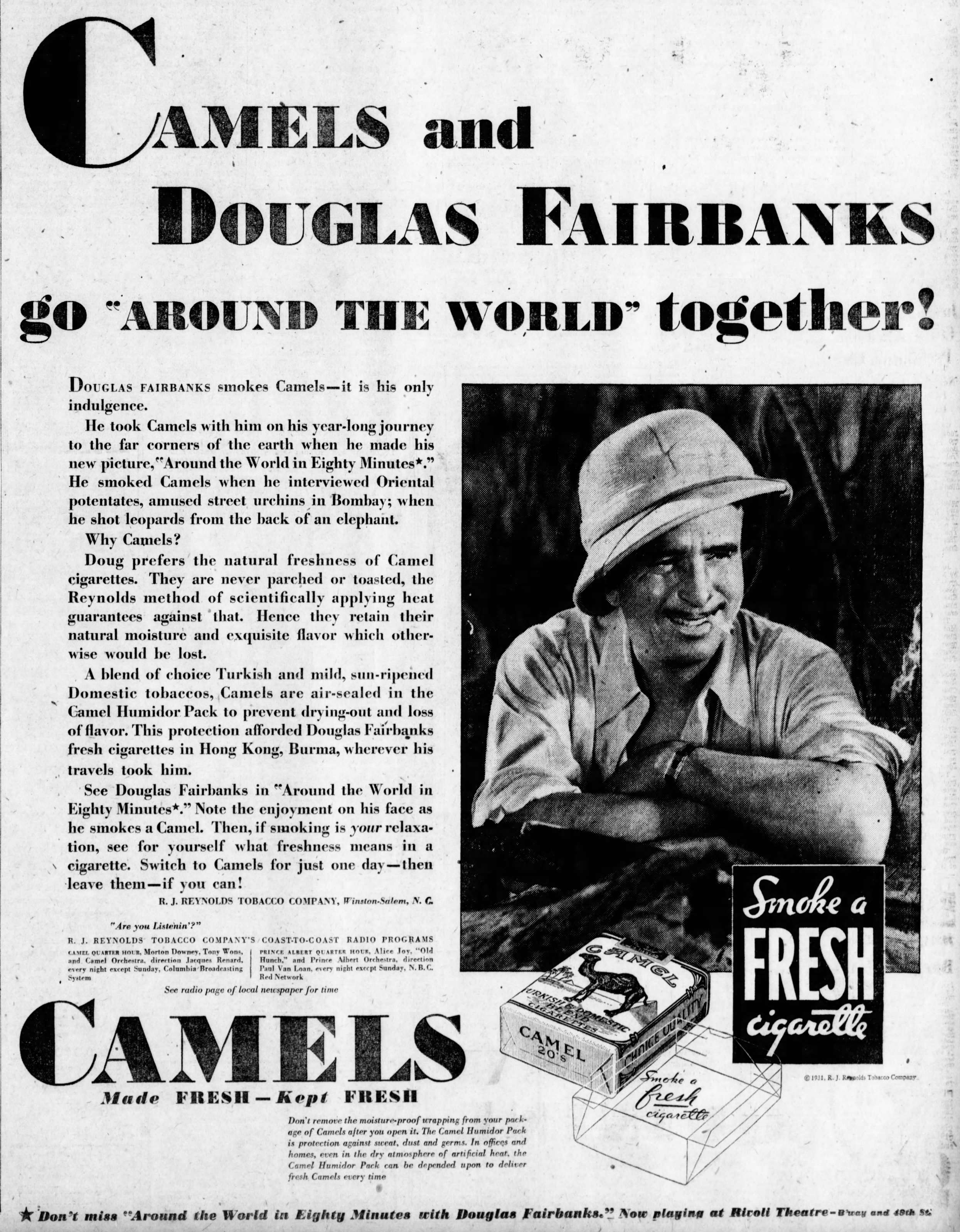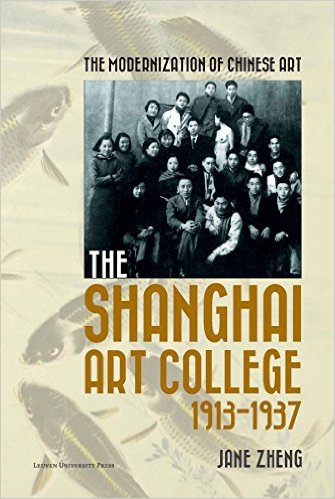Posted: March 18th, 2016 | 2 Comments »
It’s very exciting to hear that a restoration plan appears to be in place for Rangoon’s Waziya cinema (formerly the Excelsior Theatre). You can see some pictures of the cinema inside and out here at the Yangon Heritage Trust’s page. It’s been shut up and falling to ruin for many years but plans are afoot to bring it back to its original glory (read here). The Excelsior is a classic beaux-arts cinema structure originally completed in the 1920s. The plan is restore many original features including the wooden banisters, decorative flooring and a steel staircase that spirals up to the projection booth. In 1931 there were scenes of incredible crowds outside the theatre when the Hollywood actor Douglas Fairbanks visited…here’s that story….
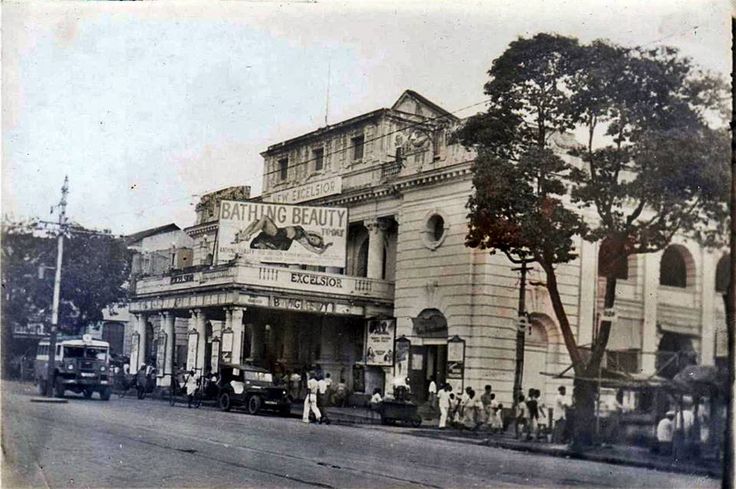
Fairbanks arrived in Rangoon in March 1931 en route to India and having already spent time in Manila. He stayed at the glorious Strand Hotel where crowds of fans camped outside hoping to catch a glimpse of him. Eventually Fairbanks came out onto the hotel’s porch to greet the fans who cried “Thief of Baghdad” – that movie had been a massive hit in Rangoon – and names of his other films. Fairbanks waved to the crowds and then retreated back into the hotel – fans pushed past the doormen and swarmed around the plush hotel’s lobby wanting more of the star. Hotel staff had to “rescue” Fairbanks and eventually managed to get the crowd out and lock the doors. For several days invitations and gifts for Fairbanks arrived at the hotel as well as requests for donations and autographs – Indian silks and Burmese teak lacquerware gifts were left in the reception for him. Fairbanks apparently donated $25 to the local Methodist Church. Women hung around outside the hotel hoping for a handshake, or maybe even a kiss from the movie star.
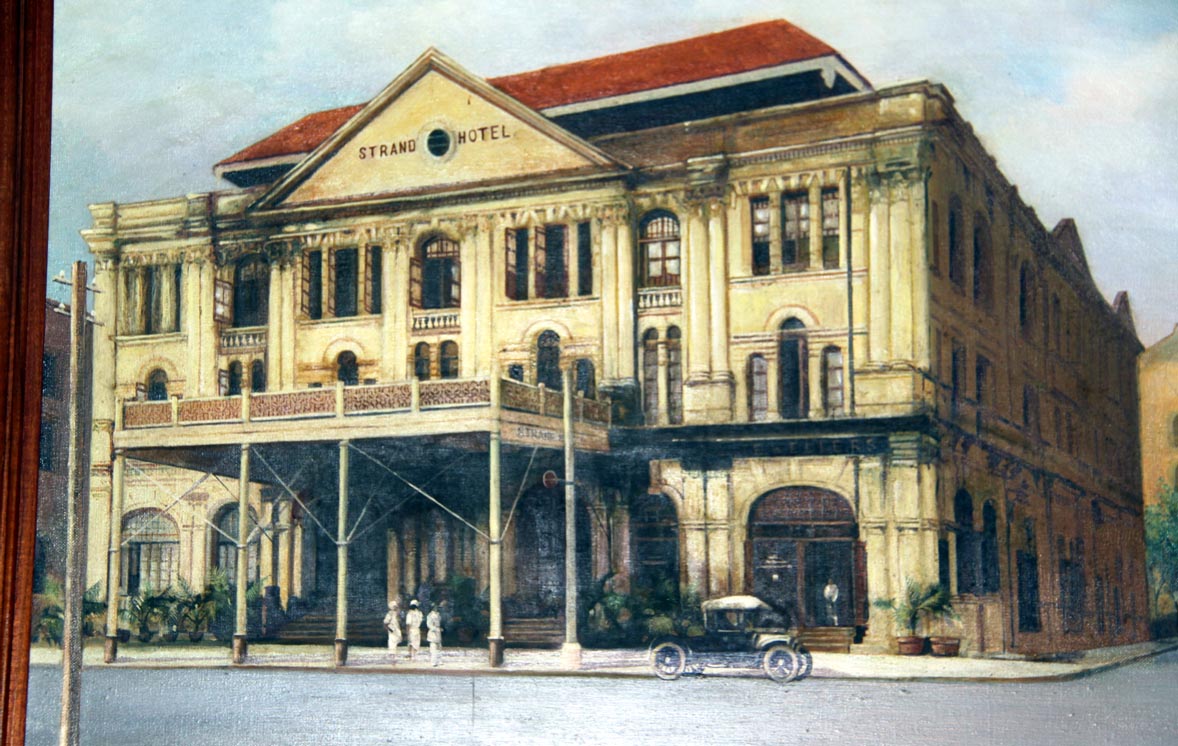
One evening Fairbanks ventured out first for a display of traditional Burmese dancing at the Tivoli and then to the Excelsior Hotel were a massive crowd had gathered knowing that Fairbanks would be attending a charity performance in aid of the Shwe Dagon Pagoda. The theatre was packed to capacity with crowds outside. Police tried to form a cordon around Fairbanks crowd when he arrived to let him get into the theatre. He managed to get in, gave a speech praising Rangoon, “partook of some refreshments” and then was ushered out again through the police cordon.

Fairbanks speech, faithfully recorded by the local newspapers, told of his happiness to help preserve the Shwe Dagon (which had been damaged by fire shortly before), of his appreciation of the beauty and manners of Burmese women, “the brilliant sunshine of their smiles” (Fairbanks knew his audience!!), wished for world peace and hoped he would return some day. And with that he headed off for the next stop on his tour – India.
Perhaps the greatest single night in the Excelsior’s history….but hopefully not its last….
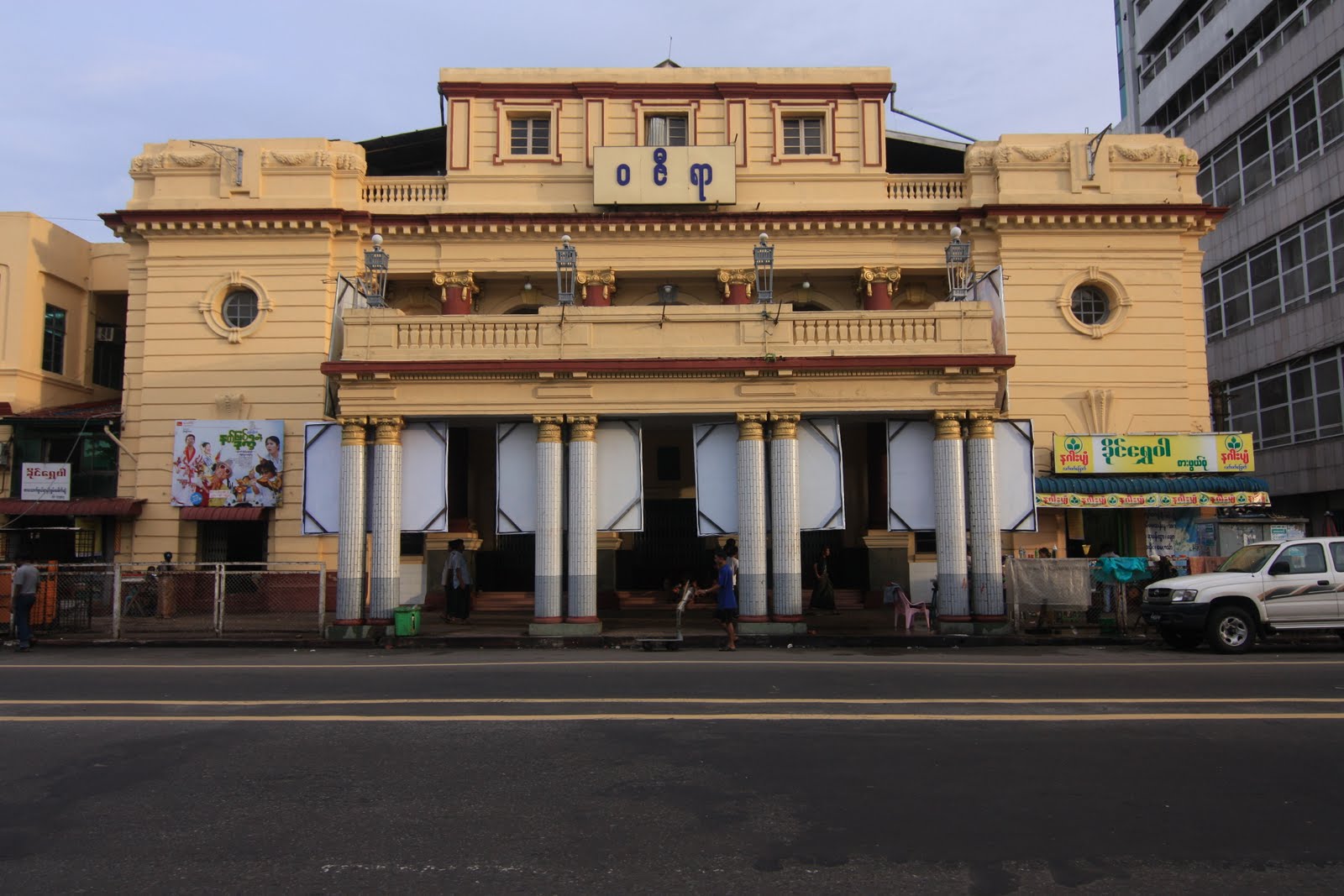
Posted: March 17th, 2016 | No Comments »
Recently I read Anthony Powell’s 1939 novel What’s Become of Waring? The novel is narrated by an anonymous publishing firm employee. At a seance, an warning is received that something is wrong with bestselling travel writer, T.T. Waring, who shortly afterwards is confirmed dead. Through various efforts to bring out an official life of Waring, many secrets are slowly revealed, especially concerning Waring’s identity and the sources of his travel literature. Not everyone in the book is that impressed with Waring’s travel writing – he is expected to be delivering a manuscript on Tibet any day. His publishers believe him to be an intrepid adventurer who travels where most fear to venture, but one old Asia-Hand dismissively comments – “Half the hardships he (Waring) brags about are what the ordinary tourist puts up with as soon as he has left the Blue Train, and sometimes before.”
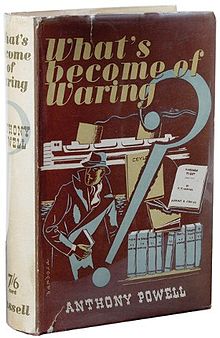
And so to the Blue Train. The Blue Train, often referred to as “Asia’s finest Train”, has featured on this blog before (and extensively in my biography of Carl Crow) as the train hijacked by bandits in 1923 at Lincheng (see that story here). The Blue Train (or more often the Blue Express) started in the 1920s between Nanking (technically to Pokou/Pukow, just outside the city on the north side of the Yangtze) and Peking, and then extended to Tientsin (Tianjin). It was completed in 1912. Altogether, the original railway line was built with 85 stations, of which 31 were in Shandong province. The Blue Express is also the famous train of the 1932 movie Shanghai Express (blogged about here too many times to note) and the Chang Hen-shui (Zhang Henshui) novel from 1935 Shanghai Express.
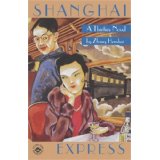

Anyway, all of this is just an excuse really to post a picture of the train in all its glory….in 1934….

Posted: March 16th, 2016 | No Comments »
Details of speakers and topics at the China and the Great War Symposium at the Imperial War Museum on the (very apt) May 4th 2016….sign up for free at Eventbrite
China and the Great War: A symposium
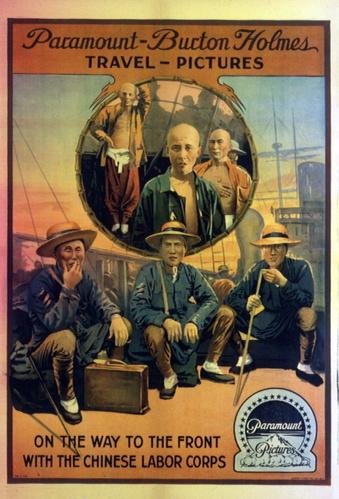
9.15 Anne Witchard (University of Westminster)
Coffee and Introduction
Â
Anne Witchard is Senior Lecturer in the Dept. of English, Linguistics and Cultural Studies at the University of Westminster. She recently published England’s Yellow Peril: Sinophobia and the Great War (Penguin 2015)
9.45 Paul J Bailey (University of Durham)
‘From “Coolie” to “Transnational Agent”: Contemporary Chinese Discourses on Chinese Contract Workers in WW1 France’
Abstract:
During World War One nearly 150,000 Chinese labourers were recruited by the British and French governments to carry out war-related work near the western front and throughout France. For a long time the role played by these workers was largely forgotten in both western and Chinese historiography, the result of an overtly Eurocentric approach to World War One in the former case, and the tendency in the latter case to view the recruitment as simply another example of China’s exploitation by nefarious western imperialism. The talk will analyse the reasons why in recent years the World War One Chinese workers have been ‘rediscovered’ in official and academic Chinese discourse, suggesting that their contribution to the allied victory is now celebrated and valorised as an example of China’s positive engagement with the world and commitment to world peace. In a wider context, such valorisation also dovetails with contemporary discourse in China that describes Chinese labour export since the 1990s very much in terms of a selfless contribution to ‘civilised’ and modern development. This grandiose and often overblown rhetoric concerning the active and beneficial nature of China’s historical and contemporary global interactions represents the flip-side to China’s other ubiquitous view of its historical interaction with the West that emphasises ‘national humiliation’ (guochi). The talk concludes that amidst the contemporary celebration of the World War One Chinese workers significant aspects of the episode are overlooked, in particular how it represented a significant change in Chinese official attitudes towards overseas Chinese labour, and why it constitutes an important chapter in modern China’s labour history.
Â
Paul Bailey is Professor of Modern Chinese History at University of Durham
10.30 Mariusz Gasior (Imperial War Museum)
‘The Chinese Labour Corps on the Western Front 1916-1918: A photographic presentation’
For the last three years Mariusz Gasior has been responsible for cataloguing the IWM’s main First World War photographic collections – so called Q Series – part of which is the material held by the museum relating to Britain’s Chinese Labour Corps.
Â
11.15 Coffee
11.30 Xu Guoqi (Hong Kong University)
‘The Great War and the Question of “what is China”‘
Â
Abstract:Â
This paper examines the following questions: how did Chinese seize the moment of the Great War to address the question “what is China†by seeking to join the family of nations as an equal member? How did the major powers provide different answers with their secret treaties and their decisions to block China’s dream at the post-war peace conference? And how did Chinese try to seek answers to question “what was China” through so-called “third civilization?â€
Â
Xu Guoqi, currently professor of history at the Hong Kong University, received his PhD in history from Harvard University. He is author of the following recent books: Asia and the Great War: a Shared History (Oxford University Press, forthcoming); Chinese and Americans: a Shared History (Harvard University Press, 2014); Strangers at the Western Front: Chinese Workers in the Great War (Harvard University Press, 2011); Olympic Dreams: China and Sports, 1895-2008 (Harvard University Press, 2008), China and the Great War (Cambridge University Press, 2005). He is now working on a book What is China: a shared and transnational history.
12.30-1.15 Lunch provided with film screening from Steve Lau and Ensuring We Remember– the National Campaign for a Permanent Memorial to the Chinese Labour Corps of the First World War.
1.15 Elisabeth Forster (University of Oxford China Centre)
‘Roundabout implications of WWI: The role of newspapers in the making of the New Culture Movement’
Â
Abstract:
The year 1919 in China was not only the year of the Treaty of Versailles. It was also the year of the protests against it (May Fourth) and the invention of the idea that there was a ‘New Culture Movement’ in China. The latter led to the popularisation of important ideas, among them Marxism and the rise of ‘plain language’ (baihua), a precursor of the modern Chinese language. This paper argues that the cultural side of this (i.e. the New Culture Movement) only happened because unexpected side effects of newspaper coverage connected it to the politics of the year (May Fourth, Versailles).
Newspapers had, in early 1919, reported about academic debates at the prestigious Beijing University in a way that made one group of academics around the scholars Hu Shi and Chen Duxiu appear as if they were victims of the Chinese government. These academics had endorsed ideas like Marxism and ‘plain language’. When students demonstrated against the Treaty of Versailles starting from 4 May 1919, these students were depicted by newspapers as government victims too. The academics at Beijing University were therefore soon identified with the May Fourth demonstrations, although they did not have more to do with the protests than other academic groups. Much to the surprise of contemporaries, not least of the newspapers themselves, these academics and their ideas soon became popular among a May Fourth-sympathetic public, and China’s culture turned towards Marxism and ‘plain language’.
This shows how much coincidence was involved in making the particular brand of modernity that we find in China today. It also argues against an understanding of New Culture and May Fourth which claims that the two were linked through Confucian notions about the connectedness of culture and politics, or that the advocates of Marxism and ‘plain language’ were also key figures in the protests of May Fourth against Versailles.
Elisabeth Forster is Departmental Lecturer in Modern Chinese History at Oxford University’s China Centre. She has published ‘From Academic Nitpicking to a “New Culture Movement”: How Newspapers Turned Academic Debates into the Center of “May Fourth”‘, Frontiers of History in China, vol. 9, no. 4, 2014: 534-557, (Together with Jan Knoerich), ‘Cross-Taiwan Strait Relations in an Era of Technological Change: Introduction’, in Paul Irwin Crookes and Jan Knoerich (eds.), Cross-Taiwan Strait Relations in an Era of Technological Change: Security, Economic and Cultural Dimensions (Basingstoke: Palgrave Macmillan) (2015) and ‘The buzzword “New Culture Movement”: Intellectual Marketing Strategies in China in 1919’, Modern Asian Studies (forthcoming).
2.00 Laura Spinney
‘Did the Spanish flu start in China?’
Â
Abstract:
The Spanish flu (1918-1920) killed between 50 and 100 million people worldwide, but its origins are wreathed in mystery. We know only that it didn’t start in Spain, but that Spain took the blame because, being neutral in the Great War, it didn’t censor its newspapers and so was the first country in Europe to publicly report cases within its borders. There are three current theories of where the pandemic began, corresponding to origins in France, the US and China. A Chinese origin was first proposed in the years immediately following the pandemic, but has recently enjoyed a revival. I will present the three theories, laying out the historical and scientific case for each. Finally I will describe new scientific research involving “molecular clocksâ€, that indicates that one of the three theories is far more likely than the other two.
Laura Spinney is a science journalist and author. Her writing on science has appeared in Nature, The Economist, The Guardian and National Geographic, among others. She is the author of two novels, an oral history of a European city and an upcoming “biography†of the Spanish flu, to be published by Jonathan Cape in the spring of 2017. Born in the UK, she currently lives in Paris.
2.45 Tea
3.00 Xiaolu Guo
Coolies
Â
Abstract:
Xiaolu Guo contributed an essay ‘Coolies’ for Goodbye to All That, a series of radio broadcasts co-commissioned by 14-18 Now-WW1 Centenary Arts Commissions the official cultural programme for the First World War Centenary commemorations hosted within the Imperial War Museums. Taking Robert Graves’ phrase as the starting point, Guo contemplates the role of Chinese ‘coolies’ on the battlefields of the First World War.
https://www.1418now.org.uk/commissions/goodbye-to-all-that/essays/coolies/
Novelist and film-maker, Xiaolu Guo studied at the Beijing Film Academy and received her MA from the National Film School in London. Her novels have been translated into more than 26 languages. Her novel A Concise Chinese-English Dictionary For Lovers (2008) was shortlisted for the Orange Prize for Fiction and in 2013 she was named as one of Granta‘s Best of Young British Novelists, a list drawn up once a decade. Her award-winning films include, She, a Chinese and Once Upon a Time Proletarian. Her latest novel is I Am China. Guo currently lives in London and was a guest of the DAAD Artists in Residence in Berlin in 2012 and a Writer in Residence of the Literaturhaus Zurich and the PWG Foundation in Zurich in 2015.
Â
3.30 Gregory James
Towards a determination of the extent of the Chinese casualties in Allied service during the First World War
Â
Abstract:
An issue often discussed in the literature is that of how many Chinese died in Allied service during the First World War. Estimates vary between 2,000 (approximately the number of Chinese Labour Corps graves in Commonwealth War Graves Commission cemeteries in northern Europe) and an unsubstantiated 34,000 “dead or missing†CLC labourers, in a recent Chinese article. Even during the conflict, the Central Powers diffused propagandist rumours of hefty losses among the labourers; already in February 1918, for example, they alleged 13,000 fatalities: “The wildness of the story is almost without parallel,†harrumphed the North-China Herald in response. The CWGC graves certainly do not represent the total number of CLC deaths, and recent research has unearthed the names of several labourers known to have died in service but who have no memorial. Moreover, the total Chinese sacrifice has also to take account of personnel in the Chinese Porter Corps, the Royal Navy, the Mercantile Marine and Inland Water Transport, as well as in French units, in Europe, Africa and the Middle East. The recent availability of previously inaccessible records has allowed a tentative establishment of evidence-based statistics of the extent of the Chinese casualties in Allied service during the war.
Â
Gregory James, a graduate of the Universities of Edinburgh (MA) and Exeter (PhD), and a Fellow of the Royal Historical Society, is a former Senior Lecturer in the University of Exeter. He also held academic posts in China, India and Iran, and now lives in retirement in Hong Kong. His monograph on the creation, management and operation of the Chinese Labour Corps (The Chinese Labour Corps (1916–1920); Hong Kong, 2013) is the leading reference on the topic.
4.15 Daniel York Loh
‘the forgotten of the forgotten’
Â
Abstract:
Daniel York Loh will discuss his new play, forgotten of the forgotten based on the untold and hidden stories of the World War One Chinese Labour Corps who worked behind the lines assisting the allied war effort. Produced by Gemma Lloyd and developed at Theatre Royal Stratford East.
Daniel York Loh is a writer, actor and filmmaker who, along with Jennifer Lim, is co-artistic director of Moongate Productions. As an actor his theatre work includes the Royal Shakespeare Company, Royal Court and National Theatre as well as in the feature films Rogue Trader and The Beach. Most recently he was in Welcome Home, Captain Fox! at the Donmar Warehouse and in the BBC Radio 4 dramatisation of The Inspector Chen Mysteries. He is a graduate of both the Royal Court’s Studio playwrights’ group and the Orange Tree writers’ collective. His first full-length stage play The Fu Manchu Complex was produced by Moongate at the Ovalhouse in 2013 and he has had several short plays staged at venues such as The Bush, Theatre Royal Stratford East, the Orange Tree and the Royal Court. His short film, Mercutio’s Dreaming: The Killing of a Chinese Actor, was nominated for four awards at the World Independent Music & Film Festival and he recently wrote the script for another short film, Dream Of Emerald Hill, produced by Moongate, which is currently playing at international film festivals. With composer Craig Adams he recently won the 2016 Perfect Pitch award to create an original musical theatre piece based on events around the 2004 Morecambe Bay cockle picker disaster.
Posted: March 15th, 2016 | No Comments »
I blogged back in September 2014 about the announcement that Shanghai’s Dongtai Road, its much-loved tat (and the odd antique) street, was coming down, as all old roads must eventually in Shanghai. There was nothing amazingly historic about the Dongtai Road market – it had only been around since the 1980s. However, the street itself had a longer history – Dongtai Lu was once Rue Tai Chan in the French Concession and constructed around 1902. The street was originally named after Taishan in Guangdong Province and well-known by many at the time as it is estimated that over 75% of all overseas Chinese in North America until the mid- to late-twentieth century could claim origin from Taishan. It was   renamed in 1906 after A. Hennequin, a member of the Conseil Municipal de Changhai and an agent of the Messageries Maritimes shipping line. Though French he was elected Chairman of the British dominated Shanghai Club in 1878. The road was a popular location for street entertainers long before it became a market.
The point about Dongtai Road’s destruction is that it leaves another swath of land with nothing planned but tower blocks, car parks and malls extending across from Xintiandi effectively. With Jingling Road (formerly Rue du Consulat) being destroyed at the moment that could leave the entire stretch from the river at Zhongshan No.2 Road (often called the Bund by people, but formerly the Quai de France as it was Frenchtown) as far west as the North-South Elevated Road completely flattened and rebuilt. That is a substantial section of the former French Concession and remember that the destruction of the old town, to the south of this area, is already substantial too.
There’s another point too, though one I know the master builders of Shanghai have no interest in. The former French Concession is now (with the exception of a couple of small indoor food markets) completely free of street markets. If, like me, you think street markets an essential part of a city then you should mourn the passing of Dongtai Road. Across Asia street markets have succumbed to the thirst of developers for land – Hong Kong being a prime example. In Shanghai, I think, it’s both a hunger for development/profit opportunities by the philistine combination of the Party-state and property developers, but also a slight distrust of markets, places where people gather, mingle, talk, argue and act as a community in a way far less controllable than in a heavily mediated public square, a shopping mall or an anodyne faux-space such as the Xintiandi development. Street markets have an inherent chaotic vitality and pleasant anarchy to them that is naturally abhorrent to the city authorities.
Imagine a London without Portobello Road, Petticoat Lane or Leather Lane; a Paris without Clignancourt, Port des Vanves or the numerous flea markets; Taipei without its night food markets (a phenomenon almost totally gone now in mainland China and Shanghai – see previous posts on the end of Wujiang Road/Love Lane back in 2010/2011) – most cities of any interest have their street markets. Shanghai now does not and has not really for some time had traditional street markets – Xiangyang Road remains as a street food market I think, but the old push and shove of the Huating Road market (moved up the road, cleaned up, made orderly and then bulldozed to make way for yet another office block) is over 15 years ago now.
The loss of the old Rue Hennequin is sad – now another ghost street that once existed but no longer. The loss of the Dongtai Road market is also a shame, though not in the way of lost architecture or buildings, but more in a loss of a vital ingredient to urban life – a little piece of the chaotic vitality of the people’s market against the blanding, smoothing, antiseptic, air conditioned, controlled city that Shanghai has become.
 Thanks to Gary Bowerman of Scribes of the Orient for this picture of Dongtai Lu last week – gone!
Thanks to Gary Bowerman of Scribes of the Orient for this picture of Dongtai Lu last week – gone!
Posted: March 14th, 2016 | No Comments »
China and the Great War: A symposium
Wednesday, 4 May 2016 from 09:00 to 17:00
Imperial War Museum
Lambeth Road
SE1 6HZ London
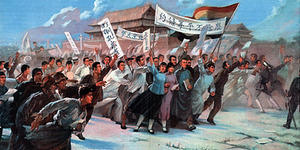
China’s participation in the First World War was a defining moment in modern Chinese and world history and the beginning of China’s journey toward internationalization. This symposium intends to extend the dimensions of our collective memory of the war along with investigations of the significance of the war to China’s subsequent role in international relations. Held on May Fourth the date of the symposium commemorates the May Fourth Revolution which followed China’s betrayal at the Paris Peace Conference of 1919.
China entered WW1 on the side of the Allied Triple Entente in 1917 on the assurance that German spheres of influence would be returned to China and privileges of foreign powers in China such as extraterritoriality would be abolished. The Chinese government’s weak response to their betrayal by the Allies at Versailles ie. the handing of former German territories to Japan – prompted the student demonstrations that played a direct role in the emergence of the New Culture Movement, a nationalist, anti-imperialist, and proto-socialist movement which sought “a third way…between Western ideas and Chinese traditional cultureâ€.
Many of China’s 20th-century political leaders participated in this and other movements that opened up questions of Chinese national identity and its future direction on the global stage. A panel of leading international scholars, archivists, and community activists will address the ways in which World War I played a substantial role in shaping China’s 20th-century trajectory.
Additionally, the symposium will mark the forgotten contribution of the Chinese Labour Corps and the work they did behind the lines on the Western Front. China’s role in the First World War has been a curiously neglected topic. The symposium will participate in the endeavours of the Chinese community in Britain to create a memorial in London to the Chinese Labour Corps.
Sign up for free here
